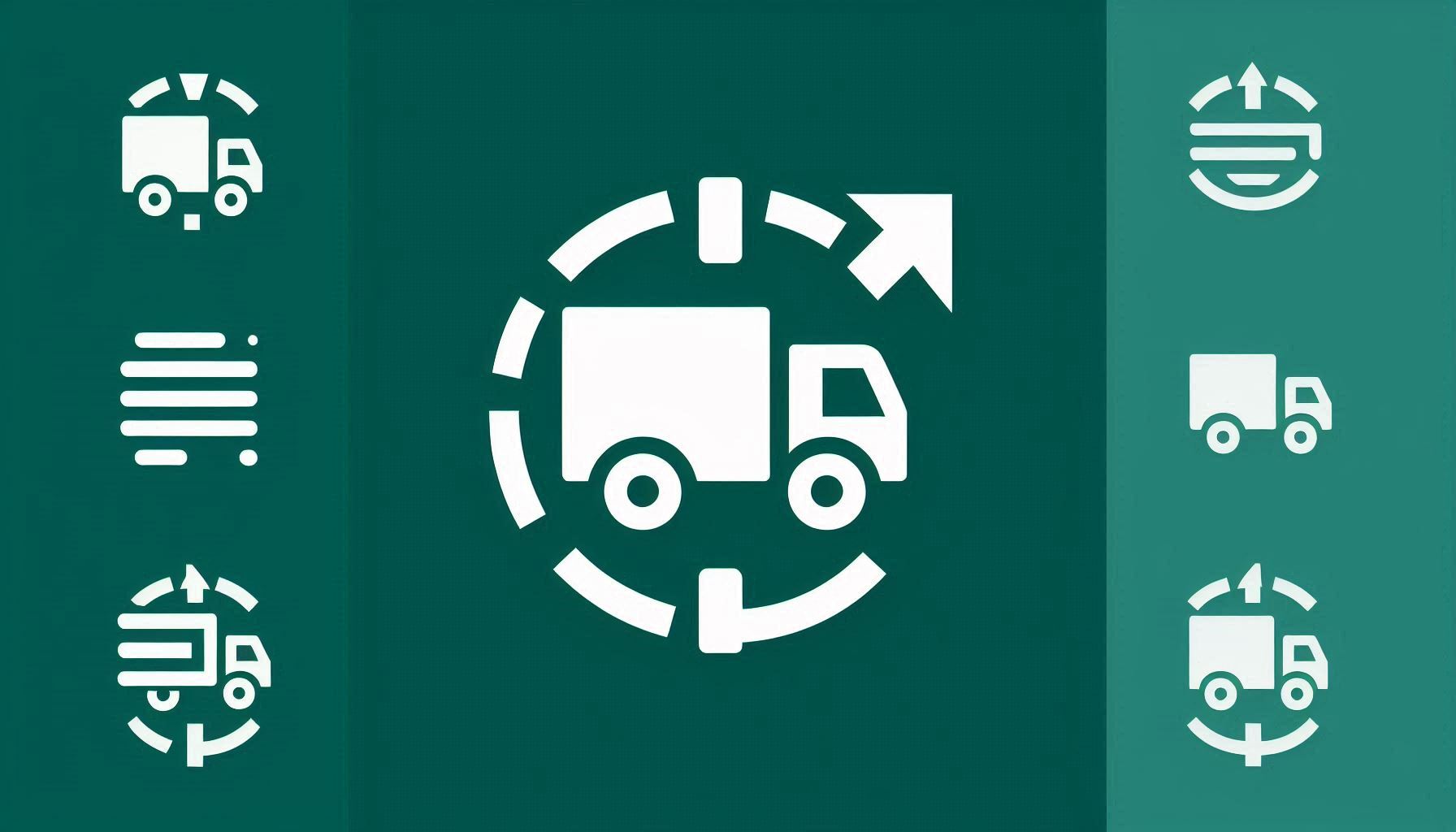Estimating Vehicle Turn-In Rate of Expressway Rest Areas via ETC Gantry Data – An ADPC-GMM Approach

Downloads
Vehicle turn-in rate is a critical and widely adopted input for expressway rest area design and operation. With the implementation of expressway ETC gantries, the ERA turn-in rate can be further estimated by measuring the travel speed distribution via ETC gantry data. This paper proposed an adaptive density peak clustering Gaussian mixture model (ADPC-GMM) for ERA turn-in rate estimation. The ADPC algorithm is applied to generate the GMM’s inputs accommodating to the traffic characteristic of ERA expressway segments and GMM would further provide the turn-in rate estimation results. To validate the model precision, the turn-in rate data of four selected ERAs in Sichuan, China, as well as the ETC gantry data of their corresponding expressway sections are obtained. According to the estimation results, the MAE and RMSE are 0.0228 and 0.0267 for the passenger car scenario and 0.0264 and 0.0356 for the commercial truck scenario, respectively. These results are also at the lowest level compared with the results acquired from ordinary GMM, K-Means and DBSCAN algorithms. The proposed method has good applicability for vehicle turn-in rate estimation and can be deployed at different ERAs, especially those ERAs without traffic monitoring.
Downloads
Ding W, Wang Y, Chu P, et al. Safety-oriented planning of expressway truck service areas based on driver demand. Frontiers in Public Health. 2022;19:976495. DOI: 10.3389/fpubh.2022.976495.
Al-Kaisy A, et al. Traffic use of rest areas on rural highways. Transportation Research Record Journal of the Transportation Research Board. 2011; 2255:146–155. DOI: 10.3141/2255-16.
Ministry of Land. Infrastructure and Transportation. Expressway Design Handbook, Ministry of Land, Seoul, Korea, 2009.
Al-Kaisy A, et al. Practical guidelines for estimation of rest area use on rural interstates and arterial highways. Transportation Research Record Journal of the Transportation Research Board. 2012;2303:117–124. DOI: 10.3141/2303-13.
Kay J, Gates T, Savolainen P, et al. Empirical models of demand levels and turn-in rates at roadside rest areas. Transportation Research Record Journal of the Transportation Research Board. 2014;2430:200–206. DOI: 10.3141/2430-21.
Griffin D, Yan X. Water use, waste generation, and traffic counts at interstate rest areas in Louisiana. Department of Civil Engineering - Louisiana Tech University, June 2003.
Shen X, Wang L, Liu H, et al. Estimation of the percentage of mainline traffic entering rest area based on BP Neural network. Journal of Applied Sciences, 2013;13:2632–2638. DOI: 10.3923/JAS.2013.2632.2638.
Shen X, Zhang F, Lv H, et al. Prediction of entering percentage into expressway service areas based on wavelet neural networks and genetic algorithms. IEEE Access, 2019;2019:2913177. DOI: 10.1109/ACCESS.2019.2913177.
Sun C, Lyu H, Yang R, et al. Traffic volume prediction for highway service areas based on XGBoost model with improved particle swarm optimization. Journal of Beijing Jiaotong University. 2021;45:74–83.
Zhao J, Yu Z, Yang X, et al. Short term traffic flow prediction of expressway service area based on STL-OMS. Physica A: Statistical Mechanics and its Applications. 2022;595:126937. DOI: 10.1016/j.physa.2022.126937.
Guo F, Zou F, Luo S, et al. Positioning method of expressway ETC gantry by multi-source traffic data. IET Intelligent Transportation Systems. 2022;00:1–15. DOI: 10.1049/itr2.12280.
Qi W, Bin R, Fu C. A novel filtering method of travel-time outliers extracted from large-scale traffic checkpoint data. Journal of Transportation Engineering, Part A: Systems. 2024;150:04023133. DOI: 10.1061/JTEPBS.TEENG-8082.
Liao L, Li Z, Lai S, et al. An expressway traffic congestion measurement under the influence of service areas. Plos One. 2023;2023:0279966.1-0279966.22. DOI: 10.1371/journal.pone.0279966.
Cai Q, Yi D, Zou F et al. Recognition of vehicles entering expressway service areas and estimation of dwell time using ETC data. Entropy. 2022;24:1208. DOI: 10.3390/e24091208.
Chiabaut N, Faitout R. Traffic congestion and travel time prediction based on historical congestion maps and identification of consensual days. Transportation Research Part C: Emerging Technologies. 2021;124:102920. DOI: 10.1016/j.trc.2020.102920.
Liu F, Bi W, Hao W, et al. An improved fuzzy trajectory clustering method for exploring urban travel patterns. Journal of Advanced Transportation. 2021;2021:6651718. DOI: 10.1155/2021/6651718.
Kim S, Chung J. Exploration on origin–destination-based travel time variability: Insights from Seoul metropolitan area. Journal of Transport Geography. 2018;70:104-113. DOI: 10.1016/j.jtrangeo.2018.05.021.
Smiti A. A critical overview of outlier detection methods. Computer Science Review. 2020;38:100306. DOI: 10.1016/j.cosrev.2020.100306.
Zheng K, Yao E, Zhang J, et al. Traffic flow estimation on the expressway network using toll ticket data. IET Intelligent Transportation Systems. 2019;13:886-895. DOI: 10.1049/iet-its.2018.5375.
Yang S, Wu Y. Mixture models for fitting freeway travel time distributions and measuring travel time reliability. Transportation Research Record Journal of the Transportation Research Board. 2016;2594:95–106. DOI: 0.3141/2594-13.
Dempster A, Laird N, Donald R. Maximum likelihood from incomplete data via the EM algorithm. Journal of the Royal Statistical Society: Series B (Methodological). 1977;39:1–38. DOI: 10.1111/j.2517-6161.1977.tb01600.x.
Figueiredo M, Jain A. Unsupervised learning of finite mixture models. IEEE Transactions on Pattern Analysis and Machine Intelligence. 2022;24(3):381–396, DOI: 10.1109/34.990138.
Rodriguez A, Laio A. Clustering by fast search and find of density peaks. Science. 2014;344(6191):1492-1496. DOI: 10.1126/science.1242072.
Wang Y, Qian J, Hassan M, et al. Density peak clustering algorithms: A review on the decade 2014–2023. Expert Systems with Applications. 2024;238:121860. DOI: 10.1016/j.eswa.2023.121860.
Weng Y, Zhang N, Yang X. Improved density peak clustering based on information entropy for ancient character images. IEEE Access. 2019;7:81691–81700. DOI: 10.1109/ACCESS.2019.2923694.
Copyright (c) 2024 Yubin ZHENG, Cheng CHENG, Yong ZHANG, Lingyi WANG, Qixuan LI, Hailin ZHANG

This work is licensed under a Creative Commons Attribution-NonCommercial 4.0 International License.




















